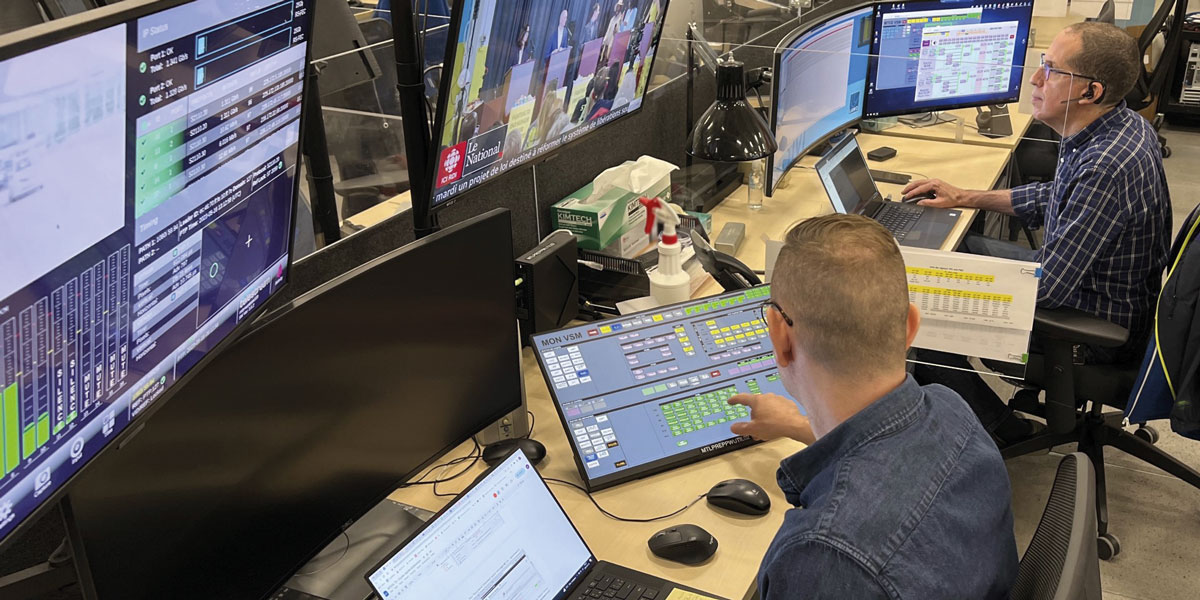Partners in crime

Posted on Oct 2, 2023 by FEED Staff
Without at least one reliable partner, most IP projects would never have seen the light of day
Sponsored editorial
The beauty of IP is that its possibilities are almost infinite. This can also be its curse. Hardly anyone considers SMPTE ST 2110 IP an out-of-the-box solution that merely requires users to disconnect their baseband SDI devices, throw in a few switches and then connect IP-compatible gear to them. That’s not how it works.
For one, only a few greenfield installations start afresh with an all-new infrastructure. Plus, quite a few devices that broadcast operators use on a daily basis still don’t speak IP natively. As a result, almost any set-up needs to include gateways to which the existing pool of SDI devices can be connected.
Their output signals are converted to IP streams which are then sent to the desired destinations. For SDI devices that need to output signals, the relevant streams are converted from IP back to SDI and transmitted to the relevant inputs on the device.
Overall, it is safe to say that most devices used to ingest and output audio and video signals are not yet native IP devices. Units like Lawo’s .edge will therefore keep playing an important part for years to come. Even a cloud-based operation still requires both entry and exit points for sources and destinations that are unable to transmit IP streams by themselves.
The Agony of Choice
When you enter into talks with a systems integrator or a vendor like Lawo, they usually ask questions about your envisaged workflow, the scope of the infrastructure versus short-term needs, the number of operators that need to work concurrently, their location for any given assignment and so on.
You probably already have an idea – the case studies on Lawo’s website may have nudged you in one direction rather than the other. But during this round of preliminary talks, several equally appealing approaches or suggestions could be brought up. You should mull them over and get back to the sales representative with more questions.
A true partner listens very carefully and happily provides feedback as to what is possible – and how.
This information will allow you to compile a call for tender, which is also based on questions you asked internally regarding who needs what and how this translates into a workflow that can be built. Lists of desirable specs received from audio and video engineers are added to the final document.
Love me Tender
The next stage will be for you to sift through the received tender documents. Well-crafted responses not only list the products that match the requirements, but also detail how they deliver on their promise and anything else they allow you to do. Coupled with a presentation of a plausible vision for your project, this should give you an idea of whether the vendor is a good fit.
Again, the ability to ask for clarifications and comments will be invaluable. Your team may have imagined a workflow that could be delivered in a different, less costly and more flexible way. Listen to such remarks. After all, you have enough experience to separate the wheat from the chaff at this stage.
Although there may be some haggling involved, your focus should be on whether the proposed solution offers everything it takes to see you through the next five to ten years – and beyond.
If you or your systems integrator approach several vendors for different parts of the envisaged solution, be sure to ask them about interoperability; how well their products communicate with devices or software from other brands.
We’re in This Together
There are also examples of broadcasters that refuse to rely on an external systems integrator. The most remarkable instance of this approach can be found in Montreal’s La nouvelle Maison de Radio-Canada (NMRC). There, the decision was to keep planning and execution in-house, forcing the project team to quickly come to grips with open standards ST 2110 IP, NMOS, SDN and several other concepts.
By the time selected partners were invited, the project team had acquired sufficient knowledge to realise that their vision of maximum agility and the capabilities of the prospective equipment required an open partnership.
The NMRC team was not just expecting advice and a helping hand – they also asked partners to refine the specifications of their products in order to implement the vision. Several partners were at first hesitant to go that far, not quite knowing what they were committing to and whether the ambitious goals could be reached in a timely fashion.
An open working relationship where temporary failure was deemed a stepping stone to success eventually convinced them to join. In Lawo’s case, this has resulted in significant refinements to its VSM broadcast control system and other products.
NMRC clearly deserves most of the credit for the successful completion of the biggest IP broadcast infrastructure to date. Its highly flexible workflow and rigorous resource pooling strategy exceeded anything that has been done in the past. But the team also knew who to rely upon as partners and how to steer the collaboration to reach an ambitious goal of controlling its agile infrastructure with single hardware or software button presses.
And the Winner Is…
In NMRC’s case, the winner was not just the Montreal-based broadcasting arm of CBC, but the broadcast community at large: product refinements and ingenious methods were only part of the story. The other half were refinements to the ST 2110 and NMOS specifications instigated and performed by the team.
Sharing all insights gained in the process is a noble gesture that will benefit peers in other parts of the world. This project shows that going it alone may occasionally work, but working hand in hand with trusted partners and openly sharing qualms and ideas will allow you to move mountains.
Originally published in the Autumn 2023 issue of FEED.











